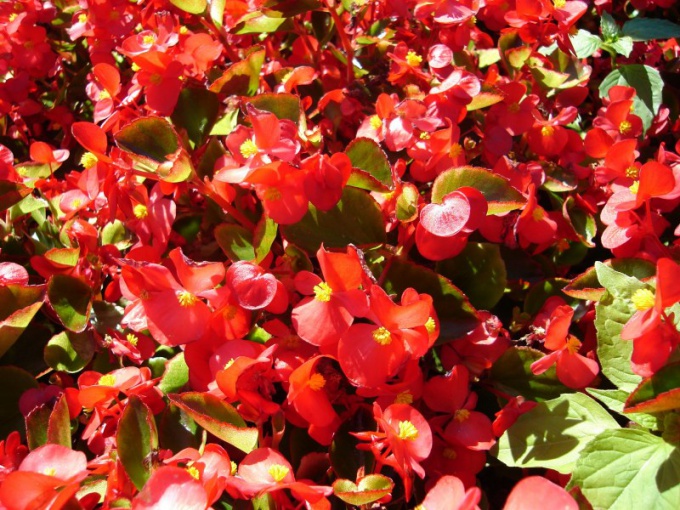You will need
- - special ground;
- liquid fertilizers.
Instruction
1
Choose begonias for a suitable place. She likes a light place protected from direct sunlight. This is particularly important when the plant blooms. Direct sunlight causes begonias burns, and the lack of light causes stretching of the stems and blanching the leaves. Only in winter it can be rearranged for some time in a Sunny place.
2
Maintain optimum temperature at +18-20oC throughout the year. Short-term lowering the temperature to 12-14 ° C is, of course, begonias will not cause any harm. But the plant may die from fungal diseases that occur at lower temperatures. In autumn and winter, be very careful to ventilate the area where it grows.
3
Pay attention to the composition of the soil. Begonias have fibrous root system with many thin roots. Because of this it requires light and permeable soil. Two parts leaf humus, two parts peat and one part coarse sand is an appropriate soil mixture. You can use ready ground, adding sand in the specified proportion. Replant begonias with the purchase if it is in the transport substrate, and also in the appearance of the first shoots, if it grows in tanks with a diameter of 7 cm.
4
Watering begonia, ensure that the soil was always moist, and the top layer dry. The plant consumes a large amount of moisture, but does not carry the excess. Begonia is developing rapidly, it is possible to feed liquid fertilizers.
5
Update crown begonias. During the year 2-3 times gently pinch or cut the leaves. If you do this in August, then in January will be able to enjoy the buds.
6
To propagate begonia, cut the required number of leaves or shoots in the second half of December to February. Then place the cuttings in a small container for rooting. The soil should consist of equal parts peat and sand. To maintain the necessary humidity, use plastic wrap or pack. Capacity put in a bright place. After rooting the little begonias can be transplanted into larger pots.
